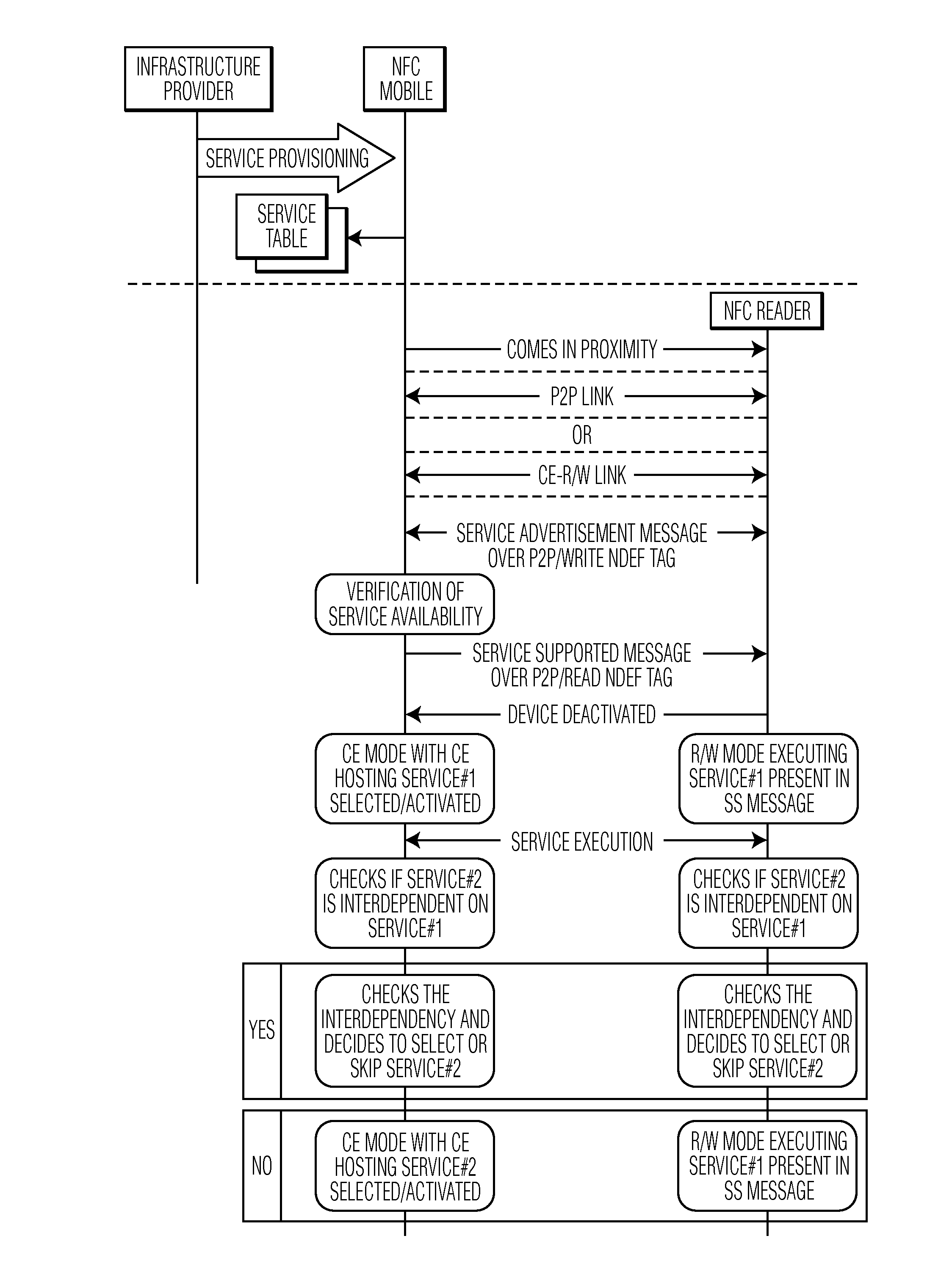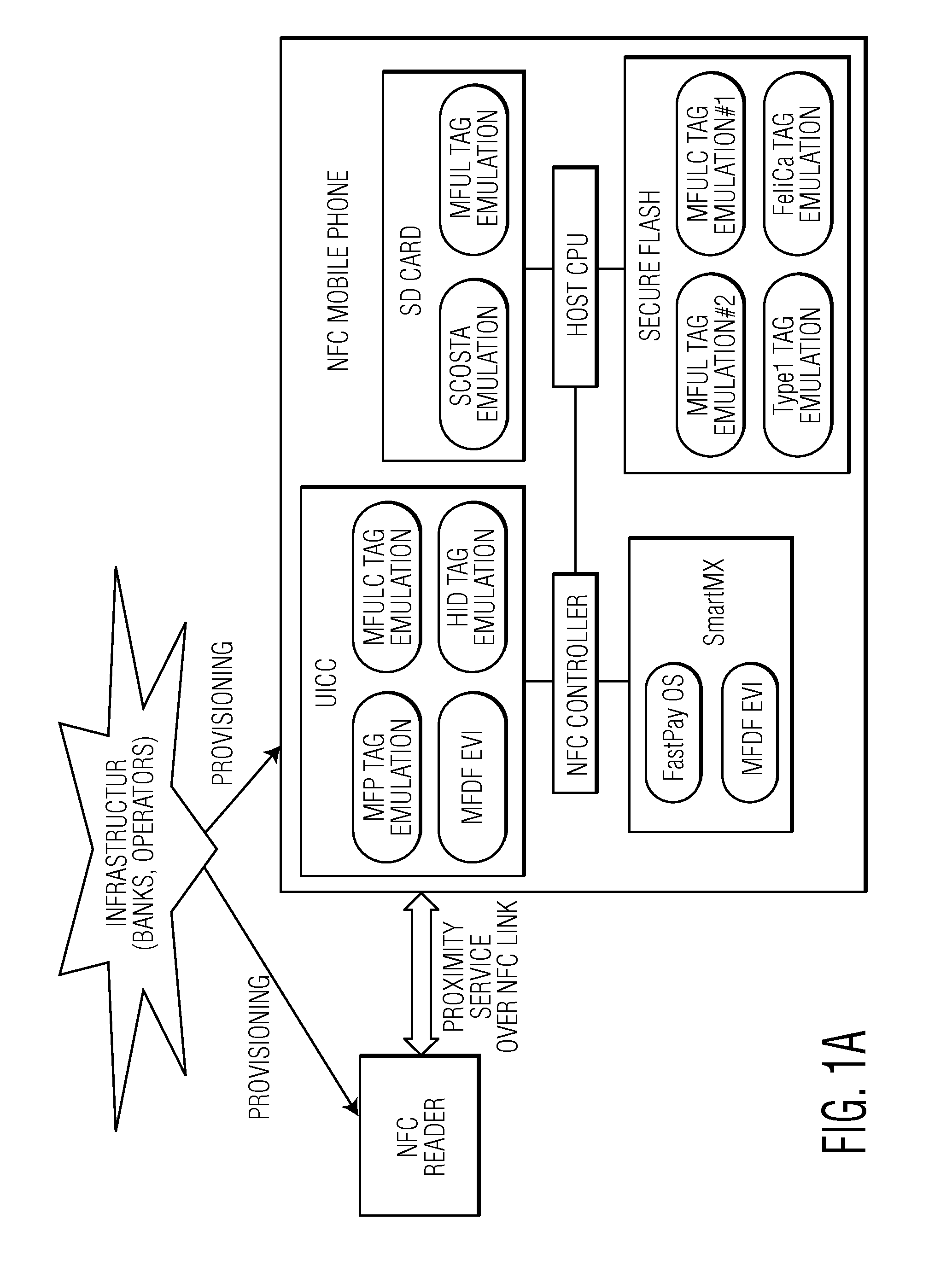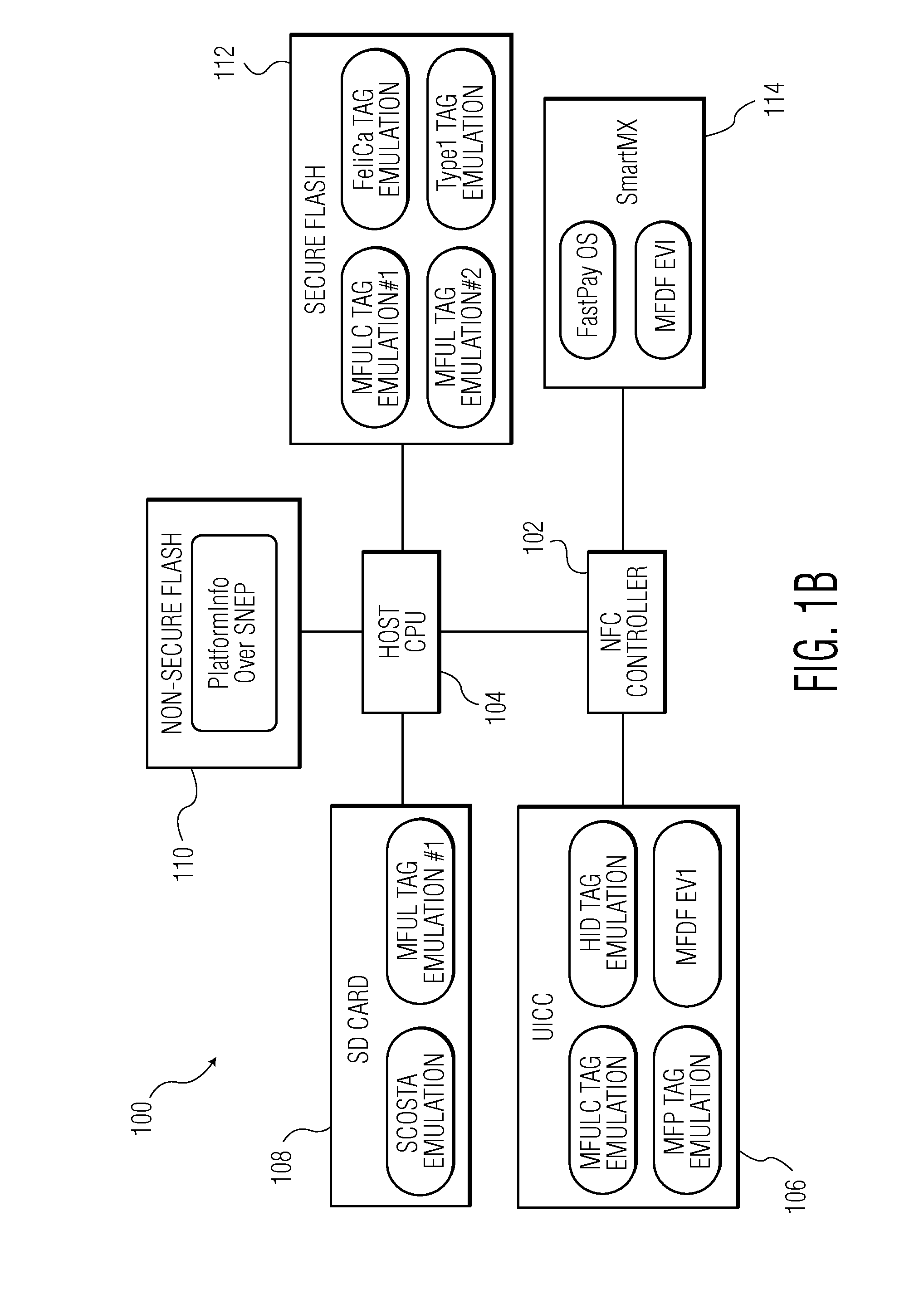NFC-enable Mobile Device, NFC reader and NFC system for Supporting a Plurality of Proximity Services
- Summary
- Abstract
- Description
- Claims
- Application Information
AI Technical Summary
Benefits of technology
Problems solved by technology
Method used
Image
Examples
Embodiment Construction
[0041]FIG. 1A illustrates a typical NFC system comprising an NFC-enabled mobile device or a smart card hosting a service or plurality of services, and an NFC reader which exercises a single service or a plurality of services.
[0042]FIG. 1B illustrates, as described above, a typical system architecture of an NFC-enabled mobile device. The NFC-enabled mobile device 100 comprises an NFC controller 102, a host CPU 104, a UICC 106, an SD Card 108, non-secure Flash memory 110, secure Flash memory 112, and a “SmartMX” chip 114. The NFC-enabled mobile device 100 typically supports a plurality of services. These services are referred to as “proximity services” because they are based on NFC technology. In this context, a proximity service corresponds to a specific operating system running on a specific secure element comprised in the NFC-enabled mobile device 100.
[0043]FIG. 2 illustrates a provisioning of proximity services in an NFC-enabled mobile device and a subsequent determination of whet...
PUM
 Login to View More
Login to View More Abstract
Description
Claims
Application Information
 Login to View More
Login to View More - R&D
- Intellectual Property
- Life Sciences
- Materials
- Tech Scout
- Unparalleled Data Quality
- Higher Quality Content
- 60% Fewer Hallucinations
Browse by: Latest US Patents, China's latest patents, Technical Efficacy Thesaurus, Application Domain, Technology Topic, Popular Technical Reports.
© 2025 PatSnap. All rights reserved.Legal|Privacy policy|Modern Slavery Act Transparency Statement|Sitemap|About US| Contact US: help@patsnap.com



